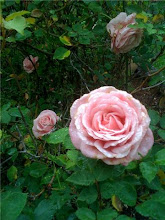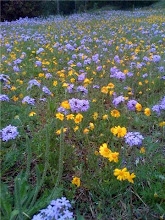
Just because it's winter doesn't mean the herbal adventures go dormant. Not with this Hill Country herbalist! With a greenhouse, I can winterize my herbs and keep them warm and happy all winter long. Along with herbs, I have heirloom tomatoes I'm growing from seed, a rather large Meyer lemon tree, a lime tree, many hibiscus plants and of course herbs herbs herbs! Here are a few herbs I have growing in the greenhouse this month:

Thyme (Thymus vulgaris)I just love each and every plant in the mint family or Lamiaceae family. They are so easy to grow, even for gardeners just starting off. I'm harvesting nearly each day from this Thyme plant to help me ward off colds and flu. Anytime I run into someone suffering from a cold or flu I inform them of the benefits of Thyme. It doesn't hardly matter how one ingests it, just so it gets in the system to help the body get well. The active ingredient in Thyme is Thymol and its actions are anti-microbial, anti-bacterial, anti-spasmodic, and expectorant. It can be gargled with once it's been steeped in warm water to help fight sore throats. Since it's anti-spasmodic, people turn to Thyme relax the gastrointestinal tract. I simply use it in most of my meals so I get a good boost each time I eat. It's great in soups and sauces. Try it, you'll love it.

Self Heal (Prunella vulgaris)is doing quite well being potted up in the greenhouse. I grow these plants for their wonderful healing leaves. People have used the leaves for their antiseptic, astringent, and anti-spasmodic actions. The leaves can be used fresh or dried in tincture, can be made into tea,or infused in oils to make salves and lotions. Many see the leaves as "tongue like" leading one to associate the benefits of this herb with being beneficial for the mouth and throat. I like to use it very much like it sounds, to help heal the skin and aid with bruises and rashes. It can be steeped in warm water and the infused water can be used to clean cuts and wounds. Internally, it is a bitter helping the digestive tract. This herb is also in the Lamiaceae (mint) family.

Wood Betony (Stachys coccinea)Another healer in the Lamiaceae family! What a joy this plant brings when it blooms scarlet red throaty flowers in late summer. The leaves have such a wonderful texture. They are rather thick, fuzzy, and very bright green. The leaves of this plant have been used by infusing them in water and sipped to aid with rattled nervous energy. It's also a bitter. It is said to strengthen and feed our central nervous system and also has a calming action. It can also be used in poultice form to assist with healing wounds. I grow all my herbs for topical uses but I enjoy reading and researching how ancient and modern day people have used these plants internally.

St. John's Wort (Hypericum perforatum)This is a lovely herb. The leaves are smooth, soft, and light green. It is sort of fern like in it's pattern. The fresh leaves can be used to make an oil infusion and the infused oil can be used topically for bruises, burns, and wounds. I have not used my herb this way; however, I have read care must be taken as the infusion can cause skin irritation in some people so if someone were to try it it would need to be tried in a small area of the skin to determine level of sensitivity. It can be made into a lotion and people have used it to aid in wound healing and in with rheumatic pain. The oil, when fully infused, will turn red in color. The flowers are a cheerful yellow. I have had my plant since late fall so it has not bloomed just yet. I am looking forward to seeing the first flowers appear next year.

Calendula (Calendula officinalis) Last on this post, but certainly not least, is the lovely and cheerful Calendula. I harvest the petals and air dry them and store them in a container. When I make rice, I add the petals as it simmers and it brings a delightful element to the dish. The fresh petals can be used in salad dressings. I frequently have dried blooms infusing in olive oil on the windowsill in the herbal kitchen. It is a staple in my serums and lotions. The healing properties of this plant make it an herbal favorite. The petals can also be steeped in water and the cooled infusion can be used as an eyewash. The infusion can also be used as a wonderful hair rinse, mouth rinse, and toner. It has anti-inflammatory properties, as well as anti fungal, antiseptic, astringent, and antispasmodic.














+and+wildflowers+loving+the+field.jpg)








No comments:
Post a Comment